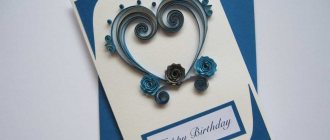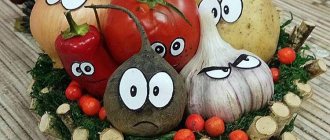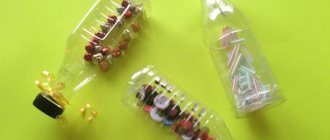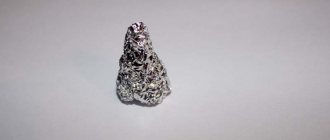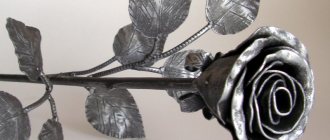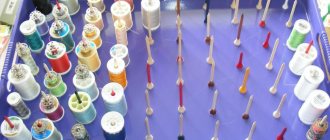Almost every person involved in hunting, fishing or extreme leisure activities will probably have their own pointy-nosed “favorite”. Of course, you need to protect him, because he is your “friend” and support in difficult times. And protecting it from the negative influences of the external environment is quite simple. He needs a sheath. This must-have accessory can be made yourself from a variety of materials. Making a knife sheath from leather with your own hands is not very difficult if you have a little skill and the right tool, but from plastic or wood the task is a little more difficult.
Knife sheath.
DIY leather knife sheath
You can go to the store and buy a suitable sheath, and read no further. But pay attention to the nuance: the blade should “sit” in the case like a glove and should not fly out while running, bending or somersaulting . Professionals advise choosing sheaths very carefully. And you may simply not find them in the store.
The easiest way out is to make your own sheath that will follow the shape of your blade, will not allow it to get lost and will save you from other possible troubles.
Moreover, the manufacturing process does not require high skill and it is permissible to use many available tools as a tool, without having a special set.
Pros and cons of the material
Leather products have their advantages and disadvantages. But they intersect with each other and sometimes a minus, in any situation, can turn into a plus.
Minuses
The disadvantages include such difficulties that the case will require constant care, although any material requires care. Controversial minus. Some argue that it is difficult to work with, and some, on the contrary, make the sheath literally “on the knee”. Again quite controversial.
And the fact that the case turns out to be soft is yes, true, but to give rigidity to the product, you first need to choose a stronger material. And the second important point is that to give it the necessary qualities, as a rule, a wooden insert is used. This is at the request of the owner of the homemade product.
Leather knife sheath.
Materials and tools
In fact, as mentioned above about leather tanning and drawing, this manufacturing process is for professionals. The same applies to the wooden insert. The article is intended to help the common man, not a leather specialist.
Therefore, the tool will not be tricky, but you will have to dig around in the garage; if you don’t have a special tool, you can replace it with any other available means that are similar in properties.
The list will include various tools, and where to use them will become clear to you further:
- You will definitely need leather, preferably naturally tanned and thick;
- shoe thread or nylon thread, reliable and not rotten;
- to process the ends you will need wax or paraffin;
- for the role of a fastener, if there is one, use a holster screw, otherwise you can take a rivet from a jacket or from anything else;
- glue, preferably “PVA”, “Moment” for gluing various materials or special for leather;
- pencil, ballpoint pen, sheet of paper, ruler;
- awl, needle, sharp scissors;
- a stationery knife or better a shoemaker's knife;
- sandpaper of different grain sizes;
- brush, stationery clips;
- fork, marking wheel, drill with drill bit 1 mm in diameter;
- tape, cling film or insulating tape;
- stain or leather cream.
Some items may or may not be needed, or may replace each other; the list is compiled with reserve. Having prepared everything you need, you can start working.
Manufacturing process for a hunting knife
Take care of the cleanliness of your workplace. Table lighting should be organized from different sides.
Leather sheath for a hunting knife.
And wash your hands before starting work:
- The first step is to wrap the blade in many layers of tape or cling film. This will protect your hands from cuts, as well as the blade from getting glue or moisture on it. Grab a little and the handle. Don’t be afraid, if the blade has become a little larger in size, a supply will not hurt.
- More “advanced” masters do not use templates. But in our case, mock-up development will save you from cutting errors, and beginners absolutely need this process. To do this, you need to trace the blade on paper with a pencil. Roll it up like a real sheath and place the blade there. Check how it sits in the layout, whether its movement is free.
- After making sure that the knife fits well in the mock-up, you need to transfer the mock-up cutting to the leather. Do this carefully and carefully. It is better to trace with a ballpoint pen from the wrong side.
- After marking, you need to carefully cut the workpiece out of the leather with scissors. Don’t be afraid, cut with a margin of a couple of millimeters. Anything unnecessary can be removed later.
- You definitely need such a part as a “spacer”; it follows the main contour and is glued to a smaller part of the workpiece; try on the blade while doing this. To eliminate errors.
- At this stage, you can glue most of the workpiece with a small amount of pre-prepared glue. Don't worry if the edges are uneven - this will all be corrected a little later.
- We wait for the glue to dry, which may take 24 hours, and cut off large irregularities with a stationery knife or something sharp. Then we sand the entire side surface with coarse-grain sandpaper and bring it to perfection with fine-grain sandpaper.
- After sanding, you can begin marking the seam. Carefully trace the outline with a pencil and use the marking wheel to apply marks. This can also be done with a fork. Choose a pitch of approximately 5 mm, as you like.
- If your skin is thick, then you need to use a drill with a drill of the smallest diameter and make holes. If you see that a “prick” with an awl is enough, then make holes with it. But keep in mind that in this case it is better to perform the operation on both sides. Immediately mark the holes for sewing on the fastener.
- You can stitch across the entire surface of the sheath, and after marking the clasp, cut it out of the leather and sew it on. It’s better not to “rack your brains” with the seam; a line on one side goes in one direction, and when returning, do it on the other.
- Don't forget to sew on a holster screw or rivet. Having completed all minor operations, rub the sheath with stain or cream. It will look like new ones from the store.
There are quite a lot of layout options on thematic resources, it’s not forbidden to peek there too, but use your imagination, and your sheath will be unique.
The model can also be made with a reserve for attaching to a belt. This will simply increase the large workpiece by a few more centimeters. There are also quite a lot of sewing methods; the simplest and most banal one has been described here. But if you want, you can really learn different types.
The process of making a holster for a camp knife
In this case, we mean the blade of, so to speak, an everyday knife for vacation, fishing, or even hunting. No, not the knife you'll use to skin your game or slaughter a wild boar. A simple small blade, more like a folding blade, which you always have with you for household work.
Sheath for a camping knife.
The manufacturing principle is practically no different . Only for the folding case the case will be small rectangular in shape. There is no need to lie; there are a lot of ways to make it yourself.
Gathering the necessary material
Not everyone can decide to make a sheath. This is what the knife sheath is called. Before starting production, it is necessary to carry out preparatory activities. First you should choose the knife itself that will need to be protected. Then purchase or prepare the following materials:
- Leather. It should be treated, thick leather, such as paracord.
- Threads. Shoe, nylon, waxed ones are suitable and are sure to be strong enough.
- Wax. You can use palm, technical, bee.
- Shoe cream. The sheath will be painted with it, so the color can be chosen as desired.
- Knife. Essential for cutting leather. You can use any one, as long as it is durable and always sharp. It's good if there is a shoemaker.
- Measuring device. A caliper with measuring inserts is best. In its absence, an ordinary compass will cope with this task.
- Pen, pencil, felt-tip pen - anything you can use to draw.
- Glue. Anything that can be used to glue skin.
- Two needles. Gypsy ones are better; you can use others if the eye allows you to insert the prepared thread.
- Pliers. An alternative would be pliers or nothing at all, provided your fingers are strong enough.
- Two drills. The diameter of the first is selected for the needles used, the second - for the button.
- Drilling machine. If it is not available, use a hand-held electric drill, or, as a last resort, an awl and a brace.
- Device for polishing leather. The ideal option is a sanding machine, otherwise use coarse sandpaper. You can put a fabric wheel on the sharpening machine.
- Small metal ruler.
- Soft thin plastic for making the mouth of the sheath.
After everything necessary has been collected, prepare the workplace. You will need an old table or board on which to cut leather to protect the furniture from damage.
Wooden scabbard
Why lately have scabbards been almost always made of leather? But how did the 70-80s completely forget about wooden ones? They used to be quite popular for hunting knives. And they did almost all of them on their own. Because in those days, a hunting blade of good quality could only be made by yourself.
And for a wooden scabbard to match the blade, it is impossible to select them, you can only make them yourself. In fact, there are several manufacturing options; we will try to describe the method of “recessing” the handle into them.
Pros and cons of the material
This material has many advantages. If we consider exactly the option in which the handle will be recessed into the sheath itself, then:
- if you fall, it is unlikely that the blade can hurt you, while the leather version may not harm you if you fail to lean on it;
- the scabbard cannot be cut even with a very sharp knife;
- strong lateral loads, for example, by stepping on it. A wooden sheath will save the blade from breaking;
- the fixation is quite reliable, even without a fastener;
- aesthetic appearance, possibility of decoration.
Wooden knife sheath.
It is actually quite easy to remove the knife, even with one hand without looking. I felt for the handle, holding the sheath with my hand, with my thumb I made an upward movement, and all that was left was to grab the handle. Also with fixation, I caught the mouth with the blade and released it, pressed it with my palm - the knife was still in place.
Disadvantages may include drying out and delamination of the wood. But again, it all depends on the type of material that is chosen for manufacturing, and it is important to process it correctly. They also require careful care, like any other sheath.
Required materials and tools
In this case, everything is much simpler than with leather. There are no inserts made into wooden sheaths, they are not needed there, but here is what is needed:
- pencil with ruler for marking;
- chisel, chisel, dremel or cutter, whichever is more convenient and available;
- sandpaper of different grain sizes;
- wood glue and wax for impregnating wood;
- a wooden block 1.5 times thicker than the handle;
- the blade itself.
It is better to use hardwood such as oak, beech or walnut. But if you don’t find it, you can try to make it from what you have available.
Manufacturing stages
Having found a suitable block, its length will depend on the center of gravity of the knife in this sheath. Otherwise, the blade will always strive to turn over with the hilt down.
Homemade wooden scabbard.
Most often, the middle of the handle is taken as a reference point, and it will be easy to grasp and the center of gravity will be lower:
- If you have two planks, that’s good; if you have a block, you need to cut it exactly in half;
- It is necessary to achieve perfect contact of the halves along the entire plane of contact with each other;
- If the handle is symmetrical, it will be easier to mark like this: place the blade with one side on the workpiece, outline it, turn it 180 degrees, and mark again. This is done so that in the future you can insert the knife without thinking about which side the cutting edge is on. And don’t be distracted by the thought of how to insert the blade more conveniently and correctly.
- The sample must be made symmetrically from two halves of the block; in the final version, it should be in the form of a funnel. Or whatever you like - in the form of an elongated cone. Smoothly tapering to the tip of a knife.
- There should be a distance of 2-3 mm between the sheath and the blade, this is necessary for winter conditions, in case the blade freezes or gets dirty with something. And the knife could be removed and cleaned in a warm place.
- Selecting wood can be done with any tools that are convenient, and today there are many attachments for drills, and this can greatly simplify the task.
- Having adjusted the mouth to the handle, you need to plan the future sheath, then go through the “finishing” with sandpaper, and don’t forget to treat the inside with wax to impregnate the wood. This will save the tree from many troubles.
- During planing, make sure that the wall thickness is 3-5 mm near the mouth, leaving a small side, it will be needed for the suspension loops.
- We glue the halves along the edges and connect them, pressing them with a good press for a day. Then the sheath, in the upper part where the side remains, needs to be wrapped with nylon thread lubricated with epoxy resin. When sheathing a blade, it always tends to widen the mouth, and simply gluing it together may not be enough. It's better to play it safe and make an additional boost.
- After the glue has dried, the entire product is sanded with the finest sandpaper and impregnated with either drying oil or flaxseed. According to your taste and imagination, you can make carved patterns before this.
At the discretion of the future owner, small holes can be made at the bottom of the sheath. On the one hand, they help to ventilate the blade, and on the other hand, moisture can get there. So decide for yourself the usefulness of the holes.
The pendant is made of leather, the loop into which the sheath will be inserted must be tight to prevent loss of the product. Again, if desired, to strengthen the structure, you can cover it with thin leather.
General information about the scabbard
A sheath is a product designed for carrying and storing edged weapons. They protect the owner and surrounding people from accidental injury from a sharp blade and prevent the appearance of rust on the metal. If you need to organize the storage of collectible, expensive, exclusive models of knives, then the sheath can be made with decor from precious stones, gold, and silver.
For the manufacture of sheaths, various materials are used, which will be characterized by increased strength - genuine leather, hardwood, metal, thick fabric, plastic.
We recommend reading the article about the unusual pchak knife. From it you will learn about what a pchak is, types of Uzbek knife, handmade pchaks from Bakhrom Yusupov, how to make an Uzbek pchak knife with your own hands. And here is more information about the best hunting knives.
Materials you can make with your own hands
You can make a sheath with your own hands from the following materials:
- a natural skin;
- wood - hardwood only;
- plastic.
| Material name | Advantages | Flaws |
| Genuine Leather | The material is dense, will last a long time as a finished product, affordable | Working with leather is difficult (requires some skills), requires specific care, remains soft |
| Wood – beech, oak, walnut | Reliability of the finished product, it is possible to decorate the sheath with decor or paints | Working with hard wood is very difficult; for fastening you will need to make hinges from leather |
| Plastic | Waterproof, has a long service life, can be washed even with aggressive agents, inexpensive | To carry out the work you will need a professional construction hair dryer |
Types of fastenings
Depending on what the knife is intended for, the types of sheath mounts differ:
- traditional (worn on the belt);
- combat (shoulder, hip);
- special (suitable only for those who want to hide the presence of bladed weapons);
- image (applies only to folk traditions and the conditions for observing attire at ceremonial parades).
On the thigh
Combat knives are worn below the waist on the hip - this is typical for the military, but is also suitable for professional hunters or wilderness survivalists. In this case, the sheath is fixed to the thigh with a belt or cord at the lower end; the upper part can be additionally secured to the belt - this is especially true for large cutting tools.
Carrying a knife this way is quite specific: it is inconvenient for an untrained person to remove it, and there is a high probability that a leg injury will occur.
On the belt
A knife is attached to a belt by both amateurs and professionals - this method can be called a belt method and is considered universal. In this case, the weapon can be worn on the left or right side, for which the scabbard is structurally provided with left-handed/right-handed hangers; there is also an option for a double-handed hanger - you can place the knife on any convenient side. The latter type of fastening allows you to carry the cutting tool on a belt both at the back and at the front.
The disadvantage of this type of carrying is the difficulty of removing the knife from the sheath while sitting or lying down.
Shoulder
The shoulder sheath mount is most often used for combat knives. It is a wide cord that is threaded through a loop in the sheath and fixed on the shoulder or forearm. The knife is worn with this mount only with the handle down.
Only specially trained people can safely carry knives with a shoulder mount; amateurs are better off not taking risks - and taking out a weapon without specific skills is extremely inconvenient, and the risk of damage to the skin, soft tissues and even the periosteum is very high.
To the fisherman's vest
On the fisherman’s vest, the place for attaching the knife is pre-thought out, because this tool can save a person’s life - for example, if a fisherman fell into the water and became entangled in his own or someone else’s nets, then a quickly removed knife in his hands will solve the problem.
The weapon must be attached to the fisherman's vest with the hilt downward - this way it will be convenient to take it out. If the vest does not have a special pocket-compartment for weapons, then you will need to attach it to the sheath on special loops.
Watch the video on how to attach a knife to a fisherman’s vest:
Which ones are suitable for a dagger, hunting knife
For a hunting knife and dagger, you should choose a belt mount and here's why:
- the easiest and most affordable way;
- the knife/dagger is located on the right or left side (where the “working” hand is located);
- the weapon is positioned with the blade down.
If the dagger is an element of traditional clothing (for example, Cossacks or Caucasian warriors), then it is worn according to the rules, for example, in a sheath on a hanging belt hanging down on the hip.
Sheath for a hunting knife Sheath for a dagger
What is Kydex
The material, invented in the second half of the 20th century, has unique characteristics. It contains rigidity, strength and resistance to external irritants, such as chemical and mechanical influences. It looks like soft plastic, but it is a completely different material and it is called kydex, in Russian it sounds like “Kydex”.
Kydex material.
At first glance, you may not understand that it has such unique properties. In Russia it is not so easy to find him. Mostly it is ordered online. But there are interior items that use this material. Its technical properties are:
- impact resistance;
- good elasticity when heated;
- fire resistance;
- resistance to abrasive influences;
- resistance to chemicals;
- moisture resistance;
- volume stability;
- has no pores.
The attentive reader will notice, why are all these descriptions needed? Everything is quite simple: we will describe the process of making a sheath from this material.
How to make a sheath out of plastic
The durability of kydex guarantees that the cover will not cut, break, swell or rot over time. Low flexibility in the normal state will allow the product to be manufactured without any additional fasteners or mechanisms. The material, having initially acquired a certain shape, will always retain it.
Advantages and disadvantages
The advantages, of course, lie in its characteristics, which were described above. And the most important point can be considered its good thermal styling; when heated to about 150 °C, the material can be molded well. It comes in different thicknesses and the viscosity temperature ranges from 150 to 220 °C.
The material has only one drawback - its availability. If you order online, as an option, the cost is quite affordable. But there is another option, to carefully study interior items that are already out of order or will soon end up in the trash. It is likely that small pieces of this material can be found.
Plastic knife sheath.
Materials and tools
The main material you will need is pieces of Kydex. Let's tell you the secret of where to really look for them. The Russian analogue is ABS (acrylonitrile butadiene styrene). It has the same qualities and is practically not inferior to the original kydex. Quite often it is used in the manufacture of office chairs. There is one component, let's look at the rest:
- gas stove oven or hair dryer;
- hacksaw;
- parchment paper for baking;
- drill with drill bit;
- riveter and rivets for it;
- sandpaper of different grains, preferably a machine;
- press from anything;
- the “hero of the occasion” itself is a knife;
- masking tape.
It’s better to say right away that if you can’t find the main component, you shouldn’t be upset. You can replace it with any plastic products. For example, the same pipe, and it’s easier to work with, and the result will hardly differ, if only a little.
Step-by-step production
Let's try to describe the whole process in more detail. When working with a hairdryer and oven, do not burn your hands on the product. There is nothing complicated in the process, you need to be quick and attentive and the trick is in the bag:
- Wrap the entire blade with masking tape, especially if the handle is made of plastic, this will protect future sheaths from sticking to the knife.
- Cut strips from plastic parts; if you bought them online, also mark and cut them. Don’t be alarmed by the unevenness - they will go away when heated, or further when sanding. Place two pieces on parchment paper and on a baking sheet, place in the oven at a temperature of 150-180 °C. The task is not to melt, but to warm up the workpieces well for elasticity.
- While heating is in progress, prepare the press. For good molding, a gasket must be placed between the walls of the press on both sides; it should not be too soft or hard. Think up, use your imagination, maybe pieces of rubber or a travel mat. Take care of the fabric lining so that the workpiece does not stick to the walls of the press.
- Wearing gloves, carefully remove the plates from the oven, place a knife between them, and quickly place them in the press. Everything must be done as carefully as possible and without wasting time.
- After 20 minutes, you can go and remove the product from the press; this time is enough for the material to form and cool.
- Then all that remains is to drill holes around the perimeter and rivet it with rivets, and use the machine to give it the shape you need. It is also worth making slots for mounting hangers.
Homemade plastic sheath.
The method is quite simple and does not take much time; some amateurs cover such products with leather. In this case, imagination is not limited by anything. The main thing is to properly “bake” the plastic and perform molding.
You can use a hair dryer rather than an oven, but it is better to work with pieces of plastic pipes.
Final processing
At the end of all manipulations, it is best to go over all edges of the product with fine sandpaper. And then paint all these places in the color of the plastic. Most likely it will be black - use a “permanent” marker. The sheath itself must be coated on the outside with shoe wax. It will be: cheap, reliable and shine beautifully.
Don't forget to sew fastenings for hanging on a belt; they can be made of thick fabric with rivets. And remember that any case needs care. Protect it from possible sand, otherwise the blade may be scratched.
Manufacturing a single-seam product
The next step is to create a blank. Check the selected leather to ensure it is not wrinkled. This can happen when it is stored folded or twisted for a long time. To straighten it, place it in warm, but not hot water. Higher temperatures speed up the wetting process. Hold until the skin becomes soft, then put under a press. This can be any load, including a stack of books.
Before you make a knife sheath with your own hands from leather, you need the following:
- prepare a paper blank;
- cut the skin along it;
- make an insert;
- prepare a suspension loop;
- cut a wedge;
- carry out the assembly.
For the layout, you can use any paper, but not thick. It is folded in half and the seam is ironed. The knife is placed on the paper with the butt of the knife facing the seam, but not close, but with an indentation of 10 mm. This indentation is needed for the future wedge. Since the handle will not allow the blade to lie tightly to the paper, it is moved to the edge of the table. The handle is aligned closely with the edge of the paper. The heel of the blade (the unsharpened part) should be completely on the paper.
If the cross (a support on the handle that protects the hand from damage) does not allow you to move the knife close to the table, the paper is pulled out to the width of the heel and folded down. After outlining the blade, the heel is outlined. Completely outline the sharp part of the knife - the blade - with a pencil or pen. Draw a line from the tip of the knife to the seam at a right angle. The layout is cut out, only the seam remains intact.
The model is unfolded, applied to the prepared skin and outlined. The material is laid out on the surface and the cutting begins with a sharp knife. You need a hard, better shoe knife. To get an even cut, you don’t need to make a lot of effort; you need to draw along the line multiple times.
The quality of the pattern greatly depends on the condition of the skin; if it is dry, hard, it is pre-soaked in warm water. Subsequently, in order to mold the cover, it is folded in half, wrapped with rope for reliability and placed under a press.
Wedge piece and insert
While the scabbard is being molded, there is time to think about protecting the seam from being cut by a sharp knife blade. Thin leather or felt is suitable for this. A 10 mm wide tape is cut out; it must exactly follow the contour of the sheath. To do this, you can again use a paper layout. Recommendations for cutting skin remain the same.
The next step is to prepare the liner. It is necessary to hold the knife in the sheath. To make it you will need a thin and flexible plastic plate. The part that shows the outline of the heel of the blade is cut out of the paper model. The length of the workpiece is made slightly longer in case the fold is uneven. To avoid mistakes, the center is drawn with a sharp object (needle, nail, awl).
The heel of the blade is wrapped in paper and glued together to prevent it from unfolding. The plate is heated with hot air using a hairdryer, a heat gun, or, in extreme cases, using an open fire. In this case, it is important not to overdo it so that the plate does not melt. To protect your hands, put on gloves, wrap the plate around the heel and lightly press it against the blade. The seam should be on the blade side. Wait until the liner cools down, then remove it. If necessary, the excess part is cut off and processed with a file . The insert must be larger than the blade, otherwise the knife simply will not fit into the sheath.
Read also: Ultraviolet bactericidal lamp for home
As a rule, the hole in the liner is small, and it will be difficult to insert a knife, so its outer side is flared. To do this, you can use any well-heated wedge, for example, a slotted screwdriver. If this is not available, the required part of the liner is heated again and, using any flat metal object, it is given the desired appearance.
Suspension options
For the convenience of carrying a knife, especially if it is a hunting knife, a pendant is made. The easiest way is to make a leather loop. To do this, measure the width of the belt, multiply by two and add another 2 cm to the seam. To give the loop the required shape, it is placed under a press. If the skin is rough, pre-soak it in warm water. After drying, the loop is sewn to the outer surface of the casing.
A similar design can be made in another way. At the initial stage, when a paper model is being made, a platform is added to the outlined blade from the handle side. It is equal in width to the sheath, and the length corresponds to the width of the belt on which it will be worn, plus a safety margin of 1.5-2 cm. Then two parallel horizontal slits are made on the leather blank in increments of approximately 1 cm. The length of the slits will correspond to the width belt, the latter will fit into the resulting loop. For strength, the cuts are sheathed.
These two models have significant disadvantages: they are designed for a specific model of belts, and to remove them you need to unfasten the latter.
For mobility, you can make a free suspension. To do this, sew on a ring, which is inserted into the loop from the first option. True, in this case there is no need to make a platform; a small strap is enough, which is subsequently threaded into the ring, folded and stitched. You can attach a carabiner to your belt, to which the case will be attached through a ring.
Preparing to sew
After all the preparatory steps, it’s time for assembly. First of all, a safety wedge is glued to the future seam; it also acts as a retainer. After the glue has completely dried, the knife is sheathed. Check that the blade is tightly covered with leather, and glue the second half of the casing to the protective blade. It is better to leave the knife so that the size of the camera does not change. The sheath is placed under the press. To speed up the process, you don’t have to wait for the first gluing to dry completely, but you need to give time for the glue to begin to harden.
After final gluing, the holes for stitching are marked. This is necessary in order to make a self-made knife case attractive. On a caliper with inserts or a regular caliper, a distance of approximately 5-7 mm is set. At a distance of 5 mm from the edge of the sheath, a line for the future seam is drawn.
With the same tools, marks of future holes are made on the line, starting from the tip and going to the mouth. For a clearer pattern, you can go through the awl again. To prevent water from accumulating in the case, the sheath is not stitched at the bottom. The holes are made using a drilling machine, in the absence of which a drill is used. In this case, you need to monitor the perpendicularity of the cartridge; this will determine how good the seam will be.
Creating a scabbard
To sew a leather sheath with your own hands, use two needles on one thread, which can be lubricated with any oil or soaked in paraffin. It is chosen approximately 3 times longer than the seam. When sewing, you can use one of two methods:
The essence of the first method is as follows: first, insert a needle into the first hole, pull the thread to the middle, then into the second hole and pull the thread. Another needle is inserted into the second hole and the thread is pulled. The first stitch is ready, the needles are on opposite sides of the sheath. The next stitch is made in the same way: the first needle is threaded into the third hole on one side, the second needle into the same hole on the other side.
With this method, you should ensure that the second needle does not pierce the thread.
In another embodiment, the first needle is passed through the first hole and the thread is pulled halfway. It is not the sock, but the eyelet that is threaded into the second hole, until about halfway through the needle, after which it is pulled back a little. Thread a second needle into the resulting loop and pull the thread through. The first needle is pulled out and the thread is pulled until it begins to pull the thread of the second needle into the sheath, thereby hiding the interweaving of the threads. Further sewing is carried out in a similar way. The last stitch ends with a knot and the thread is flame soldered.
